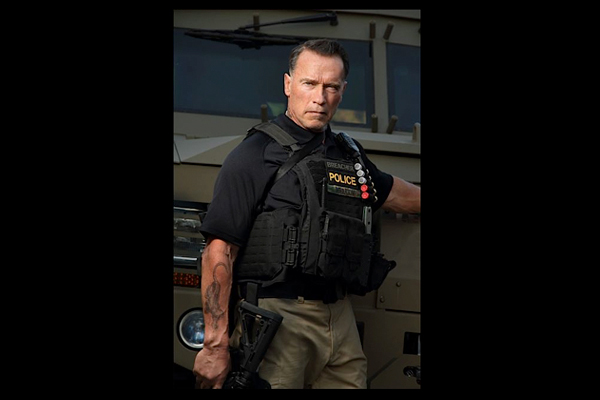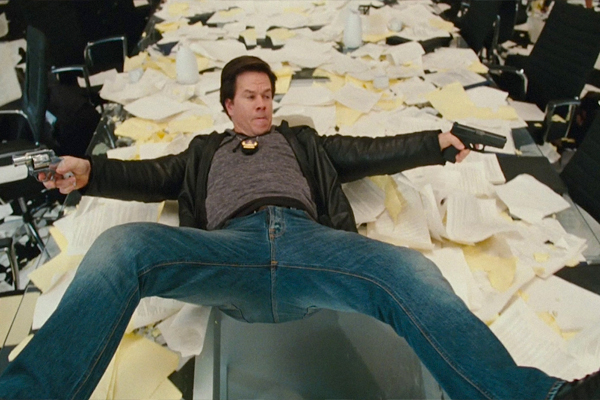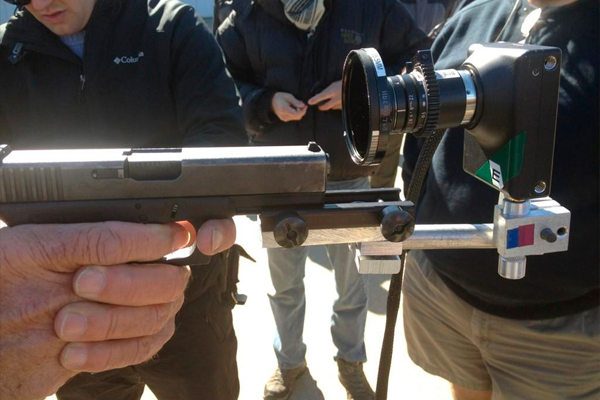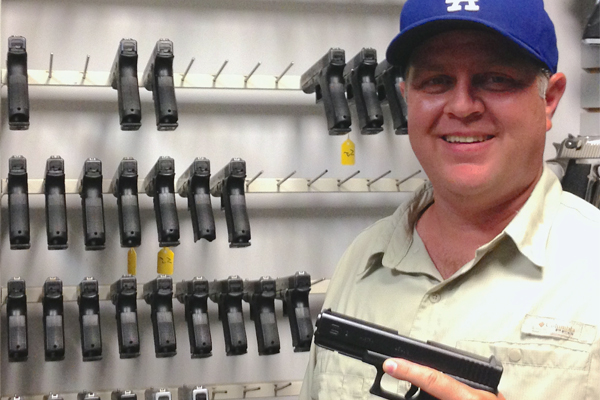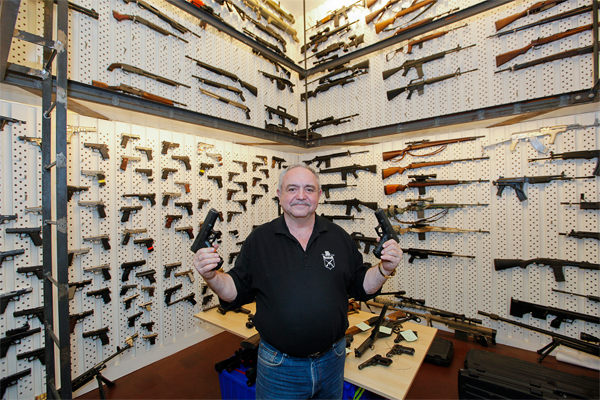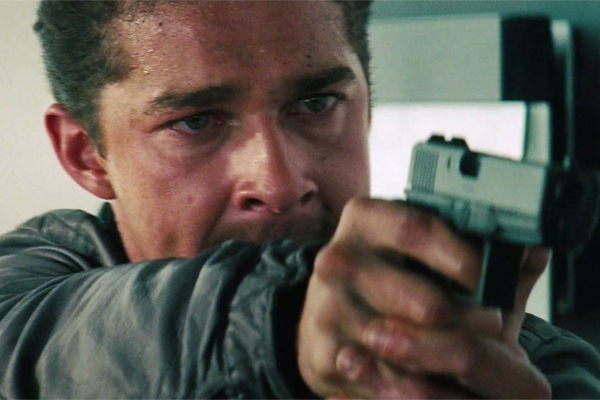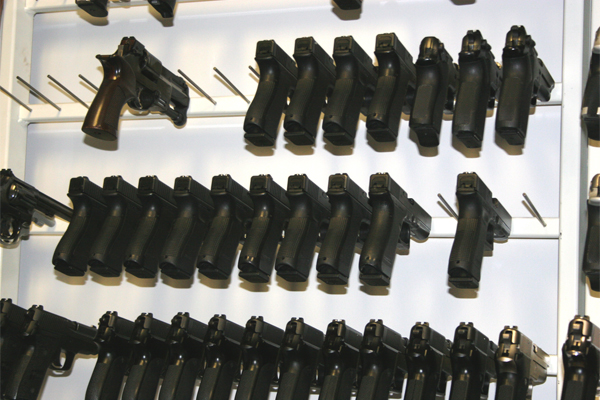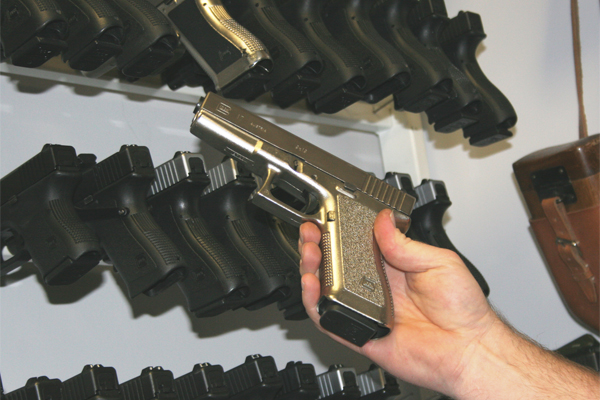The GLOCK autopistol is everywhere. Turn on the television and you’ll see it in the hands of the law enforcement heroes of Law & Order and CSI. Go to the theater for a calming night watching the sci-fi prison-break movie Lockout, and you find out the future includes the GLOCK 26 9×19. But have you ever thought about how your favorite Austrian super gun got on your favorite TV show or movie? I sat down with Gary Tuers, a third-generation Hollywood prop master/armorer, and The Specialists Ltd.’s Rick Washburn, founder of the East Coast’s top gun-rental house, to get the inside scoop on how GLOCKs make it onto the silver screen. Whether on the East Coast or the West Coast, the process begins with the script. The property masters—the men and women responsible for providing everything the actor touches that isn’t costume—read through the script for a TV show, movie or commercial and “break it down,” detailing which scenes require weapons or specific props, like holsters and special chest rigging, and make a list of the props they feel can fit those needs.
“When you’re shooting a big special effects action scene in a film like in The Amazing Spider-Man or Marvel’s The Avengers, you can’t afford a delay. We use GLOCKs because they don’t screw up.”
Since most Hollywood screenwriters and directors know jack spit about guns, the prop master/armorer has pretty much free range to step in and recommend guns that make more sense for the character and his real-life counterparts. I’ve seen a script in which a New York City patrol officer “grabs his .357 Magnum.” The armorer later pointed out that an NYPD officer would be carrying a GLOCK. One of the most famous action films of the last 30 years had a script filled with guns chosen by the screenwriter out of a gun annual for their slick looks. The writer had the hero going into the final shootout with a “Colt Woodsman .22 strapped to his hip.” Luckily, the armorer stepped in with a GLOCK, and the movie’s climax was saved.
Advertisement — Continue Reading Below
There are exceptions. Directors like Zack Man of Steel Snyder and Michael Miami Vice Mann, who are shooters themselves and know their weapons, will request a particular gun for a good reason. Sometimes the director insists on the “wrong” gun for artistic reasons, like the director of Blackwater Rising, who asked that the bad guys have a Barrett .50 BMG rifle that was polished hard chrome because “it would look cool.” Once the gun and accessory needs for each scene and character are ascertained, the armorer gathers up several choices for the “hero” gun. The hero gun is the one that will be seen clearly on screen, and the armorer must have enough of them in stock to supply at least three working models for each actor, to make sure there is always a gun ready to perform. The prop masters take inventory into account when assembling the “show and tell” guns. They then come into the studio and show the director their gun choices for each relevant scene in the script. If the film is sci-fi, the armorer could also bring in sketches and quick “mock ups” of how guns will be modified to look “futuristic.”
The armorer makes the case for each gun, and the director makes the final decision. At this point in the process, the film’s star may weigh in if he has a gun preference for his character—like Arnold Terminator Schwarzenegger did for the recent film Sabotage. Arnold likes to use GLOCKs, and he has expressed publicly his affection not only for the polymer-framed pistol, but also for the owner of the company, fellow Austrian Gaston Glock. For the film, Arnold requested that his character have a GLOCK handgun. His wish was Hollywood armorer Gary Tuers’ command. Thanks to Tuers, the “Austrian Oak” will be armed with a GLOCK 21 .45 AUTO pistol. California’s Tuers, whose dad, George Tuers II, supplied weapons and props for TV’s Knight Rider, JAG and NCIS, is one of a small group of heavily licensed professionals that are allowed to supply firearms for Hollywood productions. His credits include the World War II epic Flags of Our Fathers, the Brad Pitt-starring Western The Assassination of Jesse James by the Coward Robert Ford, and the giant sci-fi actioners Battle: Los Angeles, Terminator Salvation and Transformers: Dark of the Moon. While nearly all of Gary’s film projects feature GLOCKs, none are so thoroughly GLOCK saturated as 2013’s G.I. Joe: Retaliation.
Advertisement — Continue Reading Below
“G.I. Joe: Retaliation was like a GLOCK commercial,” Tuers related. “The Rock [Dwayne Johnson] had a pair of GLOCK 21s with all the bells and whistles we could cram on them, SureFire X300 weaponlights and suppressors. My prop crew created a set of brass knuckles that snap onto the front of the gun and look like they hold an extra magazine. The Rock’s uniform had rigs and slings to hold his GLOCKs, combat knives and extra magazines all over his body.” Tuers has been busy the last year getting GLOCKs into Dark Knight star Christian Bale’s Out of the Furnace, the new Transformers, and Arnold Schwarzenegger’s aforementioned DEA thriller Sabotage (in which they mounted a camera at the muzzle end of a Glock 17 for a real, moving POV shot of the target!). Why does Tuers love the GLOCK? “Because they work every time.” Time is an important commodity on a motion picture set, especially when filming a major blockbuster like Transformers. Lost minutes cost the production thousands. A lost day could cost millions. The last thing Gary wants is to be the source of a delay, so he goes to the GLOCK, and he’s not alone.
Karl Weschta of Independent Studio Services, one of Hollywood’s largest prop rental houses, has supplied stock and “movie-modified” GLOCKs to television shows and movies for 20 years. “You see GLOCKs everywhere because, like their police and combat counterparts, they are reliable. They’re ultimately one of the most reliable, actor-friendly firearms out there.” What does Weschta mean by “actor friendly?”

As Tuers explained it, “Sometimes the production has budgeted time and money for firearms training with the actors.” When they do, seasoned stunt coordinators like former Navy SEAL Harry Iron Man Humphries and Wally Dexter Crowder will take the actors and the guns their characters will be using to a private range just outside of Los Angeles and away from the prying eyes of the press for intense training sessions. While movie shootings use only blank cartridges, these sessions—like the ones pictured here of Arnold Schwarzenegger preparing for his role in Sabotage—are done with live ammo, so the actor knows how the gun is supposed to feel in actual firing conditions. I have seen actors who have never touched a firearm before walk away from a two-day session at the range looking like hardened Marines. Recently, they even borrowed my “space-age looking” J. Allen Enterprises-stocked M1A to train Tom Cruise for this summer’s sci-fi hit Oblivion.
Advertisement — Continue Reading Below
However, when an actor is doing a guest spot on an established TV show, there isn’t time for training in the schedule. Prep might consist of just a few minutes of instruction on the set before the cameras begin to roll: proper grip, reloading technique, awareness of safe muzzle direction, etc. According to Tuers, that’s where the GLOCK’s SAFE ACTION system shines: “When the actor is ready to go, I hand them a hot GLOCK on the set—just keep your finger off the trigger until you have to shoot.” On the other side of the country, Rick Washburn’s company, The Specialists Ltd., has been handing “hot GLOCKs” to TV, movie and even Broadway stars since 1981. I’ve known Rick since the early ‘80s when he was acting in action films like The Hangmen alongside a young Sandra Bullock. He also supplied the weapons for my Jean-Claude Van Damme hit Universal Soldier: The Return and the GLOCKs for such recent Hollywood hits as Salt, The Bourne Ultimatum and The Other Guys. Originally called Weapons Specialists, his company has expanded to become the largest theatrical weapons property house on the East Coast of the Unites States, providing a full range of prop services that includes graphics and special prop fabrication. Started in New York, it has expanded to Pennsylvania and Louisiana to cover the explosion of filming in states with tax rebates for the motion picture business.
When state tax incentives drive Hollywood productions (Read Hollywood GLOCKS: Lights, Camera, GLOCK ) to places like Pittsburgh for The Dark Knight Rises and Atlanta for The Walking Dead, the armorer must get all the necessary permits for the locale’s jurisdiction. Part of this process is telling the local film commissioner that firearm props will be used during production. A regular retail gunstore owner is not allowed to “rent” his inventory for film use, and a private citizen can’t use his or her personal firearms in a film production.
In New York City, where a privately owned pistol is as rare as a Republican at the DNC, blank-firing replica guns are forbidden to civilians, so licensed movie prop houses can apply for permits to field anything from Law & Order’s TV GLOCKs to the heavy machine guns combating the aliens in last year’s The Avengers, as long as they are willing to do some radical surgery on their weapons. Rick Washburn has been supplying movie-modified arms for more than 20 years to such hit films as Godzilla, Die Hard With a Vengeance and I Am Legend. Rick’s son, Ryder, vice president of The Specialists Ltd., explained to me the difference between renting weapons in New York City and the rest of the country and what it’s like dealing with the Big Apple’s stringent gun laws.
Advertisement — Continue Reading Below
“New York is a city where no one is allowed to possess a pistol without a license. But when you’re filming an action movie, you have to hand a pistol to an actor, and the minute you hand it to them you have a problem because they are not licensed to possess a firearm in the city.” How do The Specialists handle that? “In New York, we are required to modify all our firearms so that they can be loaded and fire a blank, but cannot fire live rounds anymore. They are considered ‘prop guns,’ disabled from firing live ammunition, and so they are legal to be in the possession of an actor.”
While Tuers, in California, can temporarily modify his GLOCKs to shoot blanks, in New York the modification has to be permanent. As Ryder explained, “That’s why out-of-state prop houses don’t ship guns to NYC. Because our guns meet the strict requirements of NYC, we can even ship guns to other states and even other countries with tighter gun laws than here.” Does modifying these guns to fire blanks compromise their reliability? Not with the GLOCK autopistol! Said Ryder, “We chose GLOCKs over other pistols because they NEVER jam. When you’re shooting a big special effects action scene in a film like The Amazing Spider-Man or Marvel’s The Avengers, you can’t afford a delay. We use GLOCKs because they don’t screw up.”
Advertisement — Continue Reading Below
How do movie productions comply with the draconian magazine limits imposed by New York State’s new SAFE law? “First, our guns have already been modified so that they are not classified as firearms, so they can’t become ‘assault weapons,’” Ryder clarified. As to the seven-round magazine capacity, “That’s still being worked out.” “They passed the law so fast,” Ryder said, “they didn’t even have exemptions for police. But the Motion Picture Association of America, the NY Film Commission and the state are trying to work it out.” How much do these movie armorers value their GLOCK autopistols? If the scene calls for action where the gun may sustain damage or be dropped, exact cast-rubber replica GLOCKs made in the prop house are used as replacements!
The next time you see your favorite actor reach for his GLOCK, know that it’s not by accident. GLOCK autopistols are heroes to the men and women behind the camera just as much as they are to those behind the badge or behind the body armor. How will the wave of new gun laws sweeping America affect motion pictures and television industry, which rely on firearms for drama? We don’t know yet, but men like Rick Washburn and Gary Tuers will do whatever is necessary to follow the law and get GLOCKs on the silver screen!
For more on GLOCK Firearms, visit: http://us.glock.com/
Advertisement — Continue Reading Below

